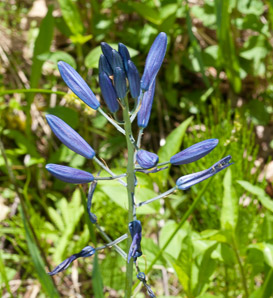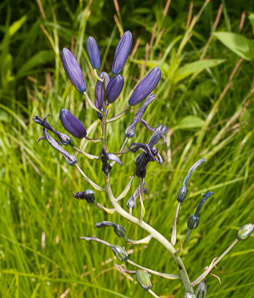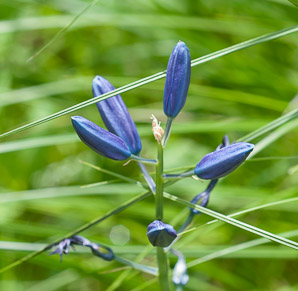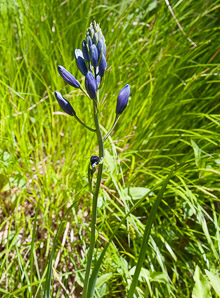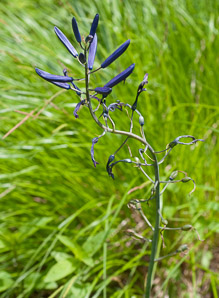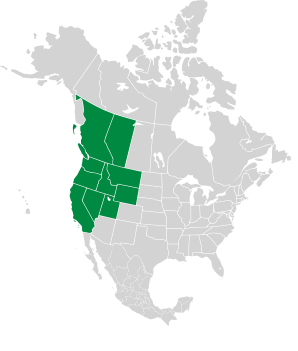
|
Camassia quamash (Pursh) Greene Camassia, Indian camas
Camassia is a North American native. The species name itself, quamash, is from qém’es, which refers to the plant's bulb, in the nearly extinct language Nez Perce. The speakers of this language, along with many other indigenous peoples including the Blackfoots and Cree, valued the bulbs as a food. Lewis and Clark and members of their party were impressed with both the industrious harvesting and processing of the bulbs, and with their flavor, described variously as similar to that of pumpkins, potatoes, or roasted onions. Identification: Plants are 2-3′ (60-91 cm) high. Leaves are 4-24″ (10-60 cm) long. Flowers are an attractive blue or blue-violet color, on racemes (flowerheads) with petals ⅜-1¼″ (1.2-3.5 cm) long. Fruits are a three-celled capsule, ⅛-¾″ (6-19 mm) long, with 5-10 seeds per cell. Bulbs are ⅜-2″ (1-5 cm) across. Edibility: Bulbs were steamed or pit-cooked for one to three days, a process which converts the indigestible and tasteless sugar inulin into simpler and digestible sugars, notably fructose. When these plants were widespread, they served as a major food resource. Cooked bulbs taste similar to chestnuts. Bulbs may be dried and pounded to produce flour, or soaked to reconstitute them. However, these plants resemble an intensely poisonous species, sometimes called "death camas" for its similarity, so it is essential to make a positive ID prior to experimenting with the culinary benefits of this plant. North American Cornucopia: Top 100 Indigenous Food Plants lists this at a top 100 prospect for commerical development as a native food source. Although they are slow-growing and do best in wetter, harder to till, soils, even in their uncultivated form they produced an estimated 20-50% of some indigenous Americans' caloric needs in the regions where they are found. Online References:
Plants for a Future, a resource and information centre for edible and otherwise useful plants Naturalhistory.si.edu (PDF) The USDA Forest Service's Fire Effects Information Database References:
Small, Ernest, North American Cornucopia: Top 100 Indigenous Food Plants, CRC Press, 2014, p. 193 5/15/2010 · Garden in the Woods, Framingham, Massachusetts · ≈ 6 × 9″ (14 × 22 cm)
Camassia quamash description by Thomas H. Kent, last updated 25 May 2020. © FloraFinder.org. All rights reserved. |
5/22/2010 · Garden in the Woods, Framingham, Massachusetts · ≈ 2 × 3½′ (69 × 103 cm) 5/22/2010 · Garden in the Woods, Framingham, Massachusetts · ≈ 2 × 1½′ (66 × 44 cm) 5/15/2010 · Garden in the Woods, Framingham, Massachusetts · ≈ 1 × 1½′ (34 × 52 cm) 5/22/2010 · Garden in the Woods, Framingham, Massachusetts · ≈ 4 × 2½′ (131 × 87 cm) 5/22/2010 · Garden in the Woods, Framingham, Massachusetts · ≈ 9 × 6″ (23 × 15 cm) Range:
|
